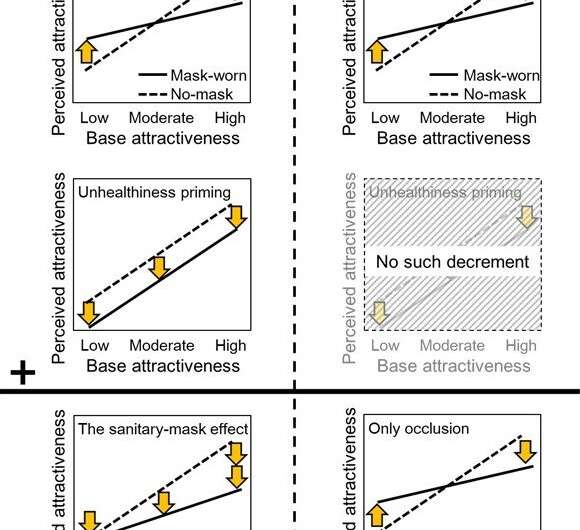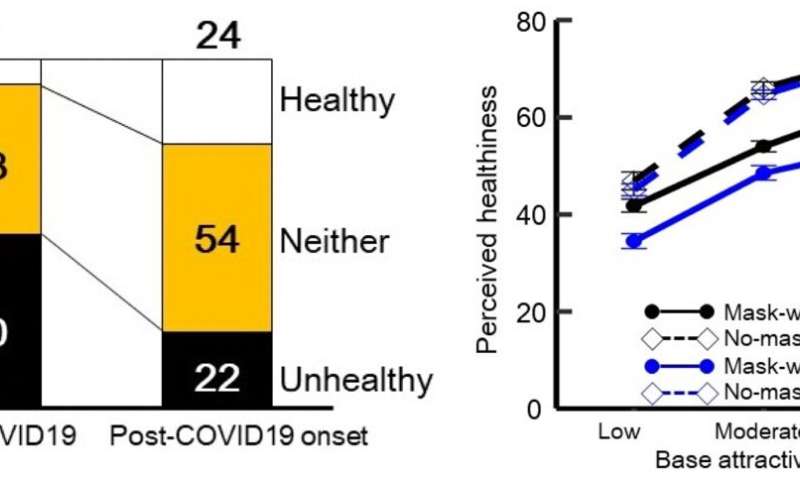Pandemic changed perceptions of masked faces

The COVID-19 pandemic has improved perceptions of facial attractiveness and healthiness of people wearing face masks in Japan.
Wearing sanitary facemasks was not uncommon in Japan prior to the COVID-19 pandemic. Public health initiatives during the pandemic have led to a drastic increase in the use of facemasks as they reduce the transmission of the SARS-CoV-2 virus. The sanitary-mask effect is a model that predicted how facemasks affected perceptions of facial attractiveness. However, as mindsets might have changed due to the pandemic, it is likely that the sanitary-mask effect has been altered.
A team of four scientists, including Professor Jun I. Kawahara from Hokkaido University’s Faculty of Letters, has revealed that there has been a shift in how the use of facemasks affects the perception of facial attractiveness among the Japanese population. Their findings were published in the journal i-Perception.
Facial attractiveness is affected by many features including facial symmetry, facial contours, the smoothness or roughness of the skin, and skin color. According to the sanitary-mask effect, reported in 2016 by members of the team, wearing a facemask affects perceptions of facial attractiveness due to two factors: the mask covers up the lower half of the face and hides features used to judge facial attractiveness (occlusion); and, the very act of wearing a face mask carries connotations of illness or susceptibility to infection (priming). Due to occlusion, they found faces appear less attractive when wearing a mask; as a result of priming, wearing facemasks reduces facial attractiveness perception across the board.

As wearing a sanitary facemask has become more common after the onset of SARS-CoV-2 pandemic, the research team speculated that beliefs regarding mask-wearers and perceptions of mask-worn faces have been changed.
In the current study, a survey of 286 adults showed that a larger proportion of respondents believed that wearing a facemask either increased or had a neutral effect on assumptions of healthiness. Prior to the pandemic, the opposite was true. A survey of 59 individuals showed that the perception of mask-worn faces has changed after the onset of the pandemic. In particular, the effect of priming was reduced, so the perceptions of attractiveness were primarily dependent on occlusion; mask color had no effect on these perceptions. Finally, a survey of 44 individuals demonstrated that the perceived unhealthiness of mask-worn faces was lower after the onset of the COVID-19 pandemic compared with before the epidemic. All the observed changes are likely due to the changes in the perception of and messaging surrounding mask use.
Source: Read Full Article


